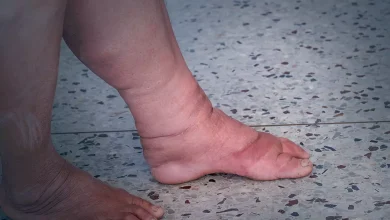All About Dacryoadenitis?

What is Dacryoadenitis?
Dacryoadenitis causes inflammation in your tear glands (lacrimal glands). It can affect people of all ages but children and young adults are more prone to it. We all have one lacrimal gland behind the upper outside corner of each of the eyes which produces and are part of our tear system. The size of the glands is like the size of an almond. When one of the lacrimal glands irritates, it causes swelling. The medical term for this inflammation is dacryoadenitis. There can be lots of factors that can cause dacryoadenitis, but it’s normally an infection or an autoimmune disease that causes it mostly. It can infect one of your eyes or both eyes at the same time and this condition is called bilateral dacryoadenitis. When you move your eyes, it may cause pain and if the swelling is more, it might affect your vision.
What are the Types of Dacryoadenitis?
There are two types of dacryoadenitis:
Acute dacryoadenitis: When an infection causes dacryoadenitis, then it is acute. It’s typically a viral or bacterial infection. It’s not so common, but parasites and fungal infections can cause acute dacryoadenitis, too. It normally affects only one eye. .
Chronic dacryoadenitis: Autoimmune diseases that result in inflammation in your lacrimal glands cause chronic dacryoadenitis. It’s more common for chronic dacryoadenitis to recur even after treatment and may affect both eyes at the same time.
What are the Symptoms of Dacryoadenit?
The common symptoms of dacryoadenitis include:
- Swelling in eyes
- Drooling eyelids
- Pain mainly in the eyes
Watery eye or discharge of water from eyes
- The Swollen lymph nodes near your ear get swollen
- Blurred vision
- Discolouration and a feeling of warmth in eyes and nearby areas
What are the Causes of Dacryoadenitis?
The cause of Dacryoadenitis include:
Congenital blockage: A large number of babies get born with a blocked tear duct due to tear drainage systems not being developed fully or there may be an abnormality in the duct . Mostly a thin tissue membrane remains above the opening that makes the nose empty and this condition is called nasolacrimal duct.
Age-related changes: As you grow older, the small openings from which the tears drain, called puncta, might become narrower, and cause blockage.
Infection or inflammation: A long period of infection or inflammation in your eyes, nose, or tear drainage system can lock your tear ducts
Injury or trauma: Any kind of damage or injury to your face or near the eyes might cause bone damage or scarring near the drainage system, which may affect the usual flow of tears by the ducts. Even tiny particles of dirt or loose skin cells lodged in the duct can lead to blockage.
Tumor: It’s very rare but a tumor in the nose or somewhere near the tear drainage system can cause dacryoadenitis.
Eye drops: Long-term use of certain medicines, including eye drops such as glaucoma, can cause a blocked tear duct resulting in dacryoadenitis.
What are the Risk Factors of Dacryoadenitis?
Some infections which increase the risk factor of dacryoadenitis include:
- Mononucleosis (mono or the Epstein-Barr virus)
- Mumps
- Adenovirus
- Staph (staphylococcal) infections
- Gonorrhoea
- Herpes simplex
- Herpes zoster oticus
Apart from these infections, there are a few more risk factors of dacryoadenitis such as:
- Age
- Chronic eye inflammation
- Previous surgery
- Glaucoma
What are the Complications of Dacryoadenitis?
The complications from infectious dacryoadenitis are not so common but in a few cases a lacrimal gland abscess may develop, or the infection may cause preseptal or orbital cellulitis.
If your tears aren’t draining the way they should drain, the tears that remain in the drainage system become motionless and cause the growth of bacteria, fungi, and viruses and fungi, which can cause regular eye infections and inflammation.
Any part of the tear drainage system, such as the clear membrane over your eye surface called the conjunctiva, might get infected or inflamed due to a blocked tear duct. Dacryoadenit may cause blurred vision also.
Living with Dacryoadenitis
Dacryoadenitis causes inflammation in one or both eyes which swells the eyes and you might feel uncomfortable, especially in social gatherings but it mostly gets well in a month or so.. Medicines are available to ease the symptoms. Sometimes the eyes become blurred so it creates visibility problems. Your doctors will help you manage the symptoms and you can lead a normal life. If the condition is serious, medicines are given in higher doses to treat the disease. You need to ask what kind of dacryoadenitis it is and take treatment accordingly. Even if your symptoms are gone after taking the medicine, you should not stop it without consulting with your doctor as it may create more complications and the disease may come back again.
Whom to Consult?
If you notice swelling, pain, or discoloration in your eyes, then it might be the symptoms of Dacryoadenitis. Dacryoadenitis can be treated, but you have to examine and diagnose the symptoms to prevent harm to your tear system Also if you are experiencing that tear constantly coming out from your eyes for many days or if any of your eyes or both eyes are repeatedly or continually infected with swelling, then you need to consult a doctor immediately because there can be several reasons behind it. Mostly it happens because of some infection and after diagnosing the result, your doctor will start the treatment which you need to follow religiously.






